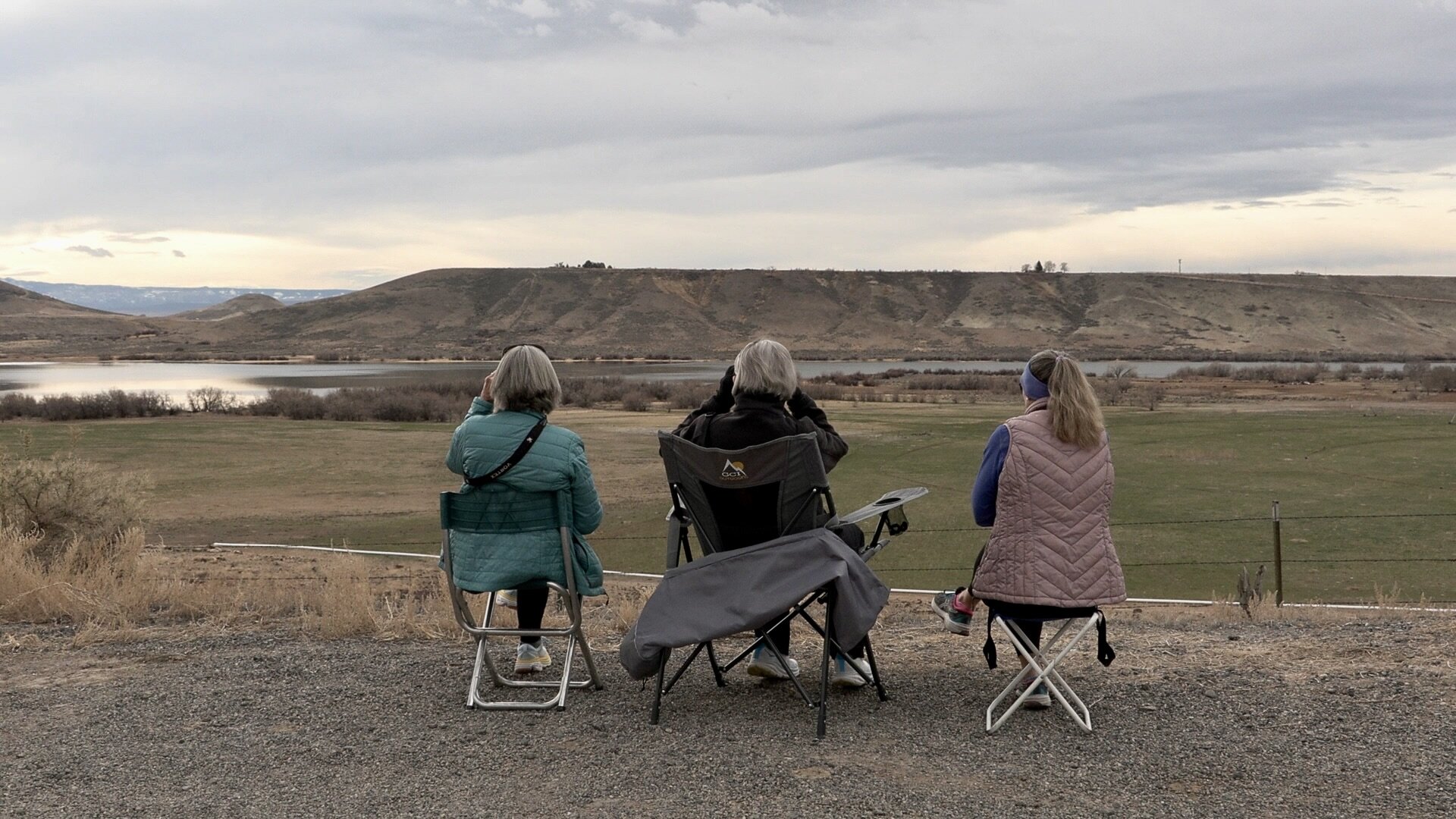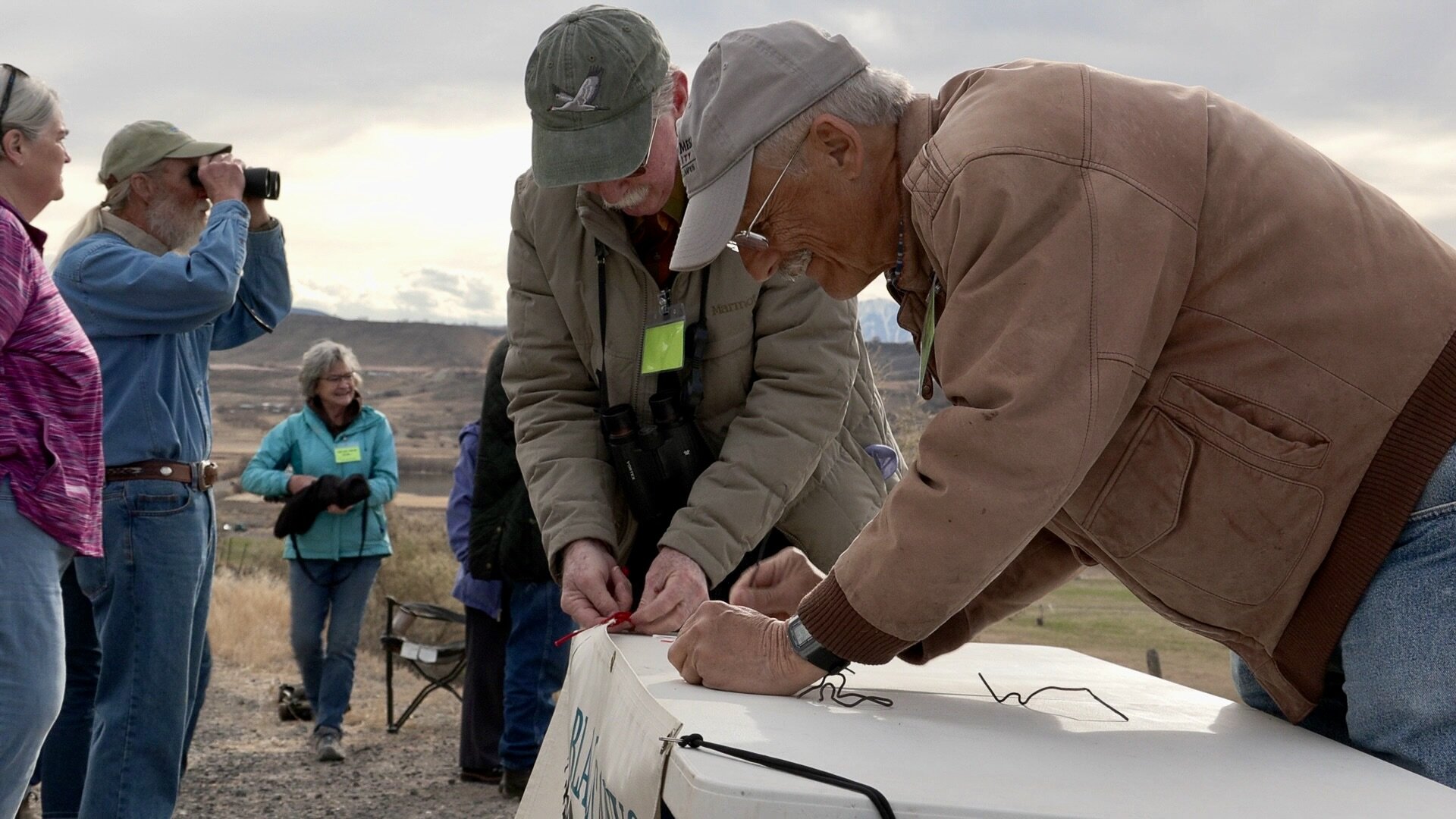Eckert, Colorado becomes Sandhill Crane rest-stop in epic migration

ECKERT, Colo. — Fruitgrowers Reservoir, north of Delta, is a favorite bird-watching spot for the Black Canyon Audubon society and birders from around the Western Slope.
While waterfowl can be found at the reservoir year-round, each spring, thousands of sandhill cranes stop to rest before flying 11,000 feet over the Grand Mesa on their way north.
People like the birds, one of the biggest in North America, because of their size and distinctive call, said Bruce Ackerman, president of the Black Canyon Audubon Society.
“We really like sandhill cranes because they're big, they're noisy, they are a kind of bird that evolved a long time ago, an ancient order of birds,” said Ackerman. Astute listeners notice the loud, slightly warbling “kruuuuuu” of the cranes, even when they’re flying high overhead.
Fossils millions of years old with structural similarities to living cranes have been found in North America, according to the Nature Conservancy.
“Across all of the subspecies [there] are estimated to be about 1.5 million in North America. The Rocky Mountain Population is estimated to be about 17- to 21,000,” said Colorado Parks and Wildlife biologist Evan Phillips at Eckert Crane Days in March.
In 2022, CPW worked with federal wildlife managers to put GPS trackers on some of the cranes that stop in the Delta area. Thousands of those cranes stay in Delta each winter instead of flying farther south.
Through the use of GPS trackers, wildlife managers have found there isn’t one clear answer for why some cranes stay in the Delta area.
“There has been changes in their distribution. It's interesting to learn that their patterns aren't necessarily very consistent from year to year, and they can vary where they winter and where they summer,” said Phillips.

Birders watch a handful of cranes below them during Eckert Crane Days.
Photo: Joshua Vorse, Rocky Mountain PBS
The wetland-like quality of the reservoir is attractive to sandhill cranes because they can get plenty of food, and spend the night safely.
“They like to spend each night standing in water. They stand at the edges to be safe from predators, like coyotes that might try to sneak up on them,” said Ackerman.
Much of the Rocky Mountain Population spend the winter in New Mexico, then head north during their spring migration.
The San Luis Valley is described by wildlife managers as a key stopover, but the reservoir in Eckert is also an important staging area for the birds before they fly thousands of feet over the Grand Mesa on their way to breeding grounds in Idaho and Montana.
Birders have been holding crane days for over a decade at Fruitgrowers Reservoir. They discuss antigone canadensis and share photos on a Facebook page dedicated to the area.
The best times to spot the cranes at the reservoir are from mid-March to mid-April.
Ackerman, who also teaches environmental science at Colorado Mesa University in Montrose, has been the president of the Black Canyon Audubon Society for seven years. He’s been bird watching for much longer.
“I’ve been bird watching for 50 years, one day it just clicked and I got really interested in it. I've traveled all around the U.S. looking at birds and I've gone to six of the seven continents,” he said.

Ackerman, right, attaches an Audubon Society banner to a table at Eckert Crane Days.
Photo: Joshua Vorse, Rocky Mountain PBS
While there are other places to observe cranes, in vastly larger numbers, including the Platte River in Nebraska where tens of thousands of birds lift off each morning at peak migration, Ackerman appreciates this spot in western Colorado.
“Other places you can go are in the San Luis Valley, and over in Nebraska, to see even more cranes, but we’re proud of the ones that come here,” he said.
Joshua Vorse is a multimedia journalist at Rocky Mountain PBS. Joshuavorse@rmpbs.org